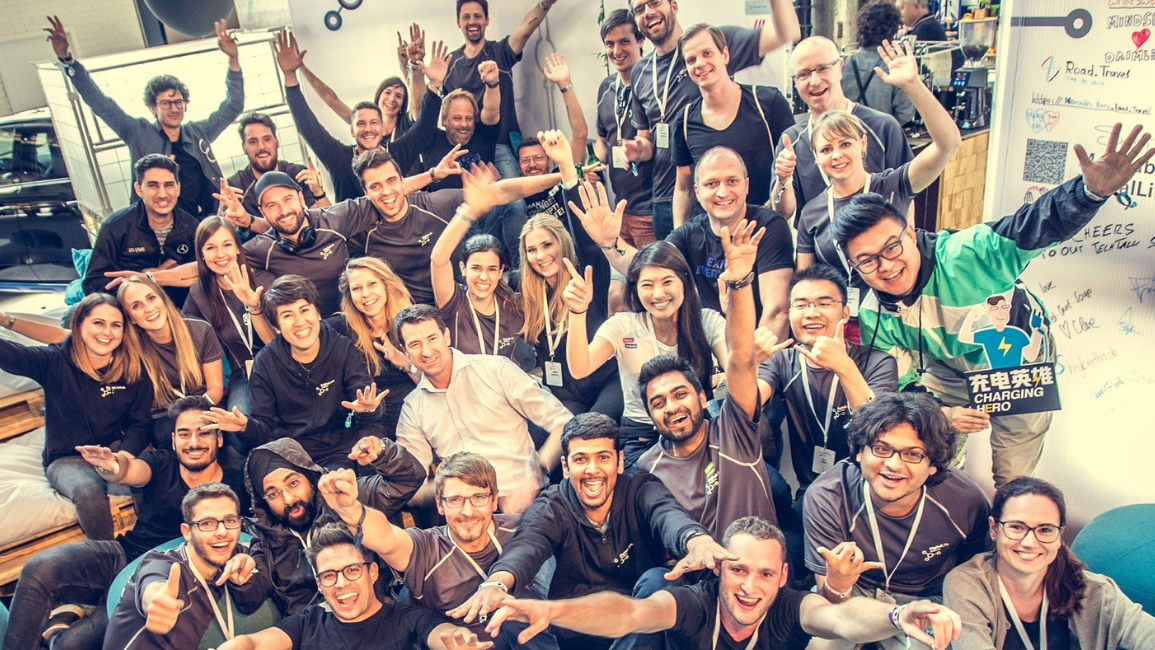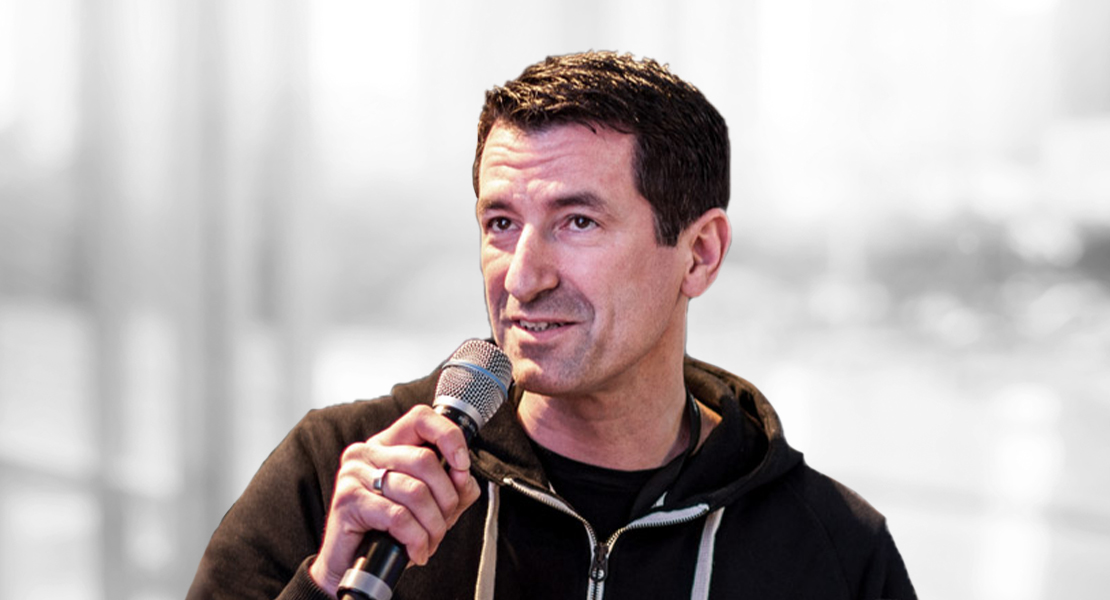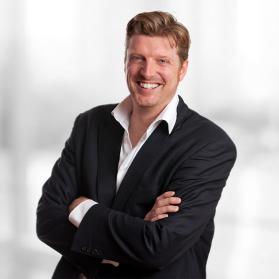Since 2011, the DigitalLife program at Daimler has stood for boundless and unconditional innovation. This is where all activities related to the topic of digitization come together; the digital transformation is to be advanced across all business units. Numerous innovation initiatives and a comprehensive training program are currently being bundled here. Program manager Markus Hägele reports in an interview with Detecon partner Marc Wagner that it is sometimes necessary to take detours and overcome setbacks.
Marc Wagner: Digitalization is the talk of the town all around the world. Yet there have been phases of automation and transformation in the past as well. Why would you say that things are any different today than they were in the past?
Markus Hägele: Digital transformation affects all divisions and added-value levels in a company; it is not limited to the customer interface, but encompasses employees, processes, and systems as well. In all companies, across all industries, for all business models. The disruptive force is greater than during any other wave of innovation we have ever experienced. Smartphone and access to information have fundamentally altered our perception of the world and, with it, our expectations for companies.
Viewed in this setting, what are the concrete challenges for the automotive industry?
We compile them all under the acronym CASE, which stands for Connected – Autonomous – Shared – Electrified. Four topics that in the future will shape customer behavior and consequently our products and services. Connected refers to the digitalization and interconnectivity of the vehicle. Autonomous describes self-driving vehicles. Electrified stands for the electrification that everyone is talking about. And Shared covers the concept of shared mobility and other mobility services. We were already on the move in this respect at a relatively early stage with car2go and other services.
These four megatrends will put their stamp on the future of the automotive industry. And they impact all processes and systems, but above all our employees as well. Our colleagues must support digitalization and drive it forward with their skills, their curiosity, and their will.
There are those who like to say: “... away from the traditional automobile provider and toward a provider of mobility services.” What does this mean in concrete terms?
We have always striven to create the perfect driving experience for our customers. Our cars used to be designed by engineers, who are today joined by computer scientists during the development of a vehicle. So we need additional skills if we are to keep pace with the competition. We operate in two different worlds. On the one hand, we must continue to evolve our core business and be innovative here as well. On the other hand, we must open up new fields of business. The one cannot survive without the other.
You are describing the principle of ambidexterity – a model in which you are able to make the core business more and more efficient and better and better, but at the same time to generate more and more radical innovations that may possibly turn the current business completely upside-down. My observations lead me to the conclusion that we here in Germany often find it difficult to deal with radical innovations and look for our salvation outside the company. We establish digital labs, participate in startups, and outsource innovations because that seems easier to us. How do you see it?
We try to obtain the best from both worlds and in some cases to merge them. That is not always easy, but it has its advantages. Starting up a new business is not always the non plus ultra, but a certain separation definitely makes sense. An organization must be in a position to drive changes from the inside, and we have been doing that at Daimler for more than 130 years. Innovation, progress, and transformation are a part of our DNA – we would otherwise not be where we are today.
Could you explain the purpose of the initiative DigitalLife@Daimler in two sentences?
To put it briefly, the objective of the DigitalLife initiative is to approach digitalization broadly and holistically throughout the corporation. It focuses on people; we bring together people and ideas, make innovations visible, and drive them forward.
You have already said that new skills and thus new generations of employees are needed for digital transformation. What is Daimler doing to make sure that the skills, the spirit, and the knowledge of the digital natives transfer to the rest of the organization?
We are pursuing many different activities to ensure that all our colleagues accompany us on our road to digitalization. And this is extremely important. We don’t want any “old and new” in the sense of “good or bad.” We must be innovative in our core business, too, and consider in depth the importance of digital topics here. There are plenty of digital features in every E- or S-Class car even today. In this sense, we are working on expanding the general knowledge of digitalization for all employees. This also has a lot to do with mindset and enthusiasm. We try to heighten enthusiasm; for instance, there is the DigitalLife Day when a thousand employees come together every year and find inspiration from fantastic internal and external speakers, marketplaces, and Daimler projects. During the same event, employees come on stage to pitch the ideas that they have previously developed and realized. Employees clearly recognize that they can also make a contribution and realize good ideas. And that is highly motivating, of course.
What do you consider to be the greatest stumbling blocks as you realize the topics being addressed within the framework of DigitalLife? After all, you are a gigantic company, which is why there are undoubtedly regional and cultural differences that could prove to be an obstacle.
I don’t believe the local differences are nearly as great as some people think. China, of course, is an extremely digital market, and in my view it is often much more fascinating than Silicon Valley or other markets. However, we must consider all markets, and naturally all of them have their special features. But when the point is to drive innovations with enthusiasm, the cultures are not really so very different. In other respects, one of the greatest hurdles is the acceptance by middle management. The clay level, as it is often called, which certainly has to face understandable challenges because it is often under tremendous pressure in the operating business. Supporting an employee or encouraging an idea from another division at the same time is not always a simple matter.

We have made the same observation. In a study we have conducted, we conclude: “Ideas are cheap. Implementation matters.” Developing great ideas is not enough; they must also be taken to the market as quickly as possible while overcoming all resistance. How do you support this?
One of the ways we support this is through training programs. We bring the teams together, conduct a risk assumption test and other analyses, and then go through a number of different topics with them so that they have a feeling for what is important and necessary on the road to implementation. But I would say that the greatest challenge is making sure we all understand that there is not one all-encompassing solution, but that it will always be necessary to take detours. Let’s consider the development of an app as an example. If we notice that the development is too expensive or too complicated, we must perhaps cut a great idea into smaller slices and, by achieving a small success, provide a convincing argument for continuing the process. This often works out for us, but to be honest, that is not always the case, I’m afraid.
Could you give us a concrete example of a situation where this has been especially successful? I mean here an example that you also took to the employees to show them how it can work and that it is worthwhile to stick to the course.
We really do have a good example that we often use because it covers a very large scope of the bandwidth. This example is called pacTris. Three young colleagues presented this idea during the DigitalLife Day and took the prize. Essentially, it has to do with finding the most intelligent way to load the trunk of your car. For example, you drive to a furniture store and buy a chair and a table, but you don’t know if both will fit into your car or not. So you pick up your smartphone and, with the aid of an app, determine whether the items will fit into your trunk and, if so, what the best way to pack them is. Frankly, the idea was not really so new, but the technical realization is the main point. People used to consider ways to solve this with an image recognition program, using the smartphone’s camera to determine the size of the objects precisely. But how do I compare that with the size of the trunk? The guys had the very simple idea of starting with a bar code. Most DIY stores and furniture retailers have included the dimensions of their products in catalogs so that you can obtain the dimensions without complicated technology and without any photo at all. We implemented this first for the Smart, but are now moving on to other Mercedes products and have arrived in the meantime at logistics, where there is naturally enormous potential. So we have moved from a small idea for customers to the portfolio to business processes in logistics.
That is really a perfect success story. Let’s talk about the subject of New Work. What does the topic mean for you? What are the fundamental aspects of New Work in your mind?
New Work means a lot of different things for me: self-determination, flexibility, new office concepts, but above all a new way of working together, which of course includes tools, technologies, and methods. And that brings us back to the topic of mindset and culture. Are employees even interested in working together? Do you have the right tools – in our case, for example, the Social Intranet – that will enable them to work together? Are they prepared to share? “Sharing is the new coding,” i.e., the real challenge is not the coding itself, but actually the sharing of information and knowledge. In this context, New Work is not limited to the question of “What’s in it for me?”, but also encompasses “What’s in it for us together as employees and the company?” In New Work, people have more self-determination and more freedom to make decisions, but in the interest of the company, the community, and the common goals everyone is pursuing.
A fascinating aspect. We always say that the greatest enemies of leadership are self-orientation and fear. The fear of losing something on the one hand and focusing on one’s own benefits, one’s own interests and not seeing the community at the center on the other.
The one has a lot to do with the other. Simply passing on their knowledge strikes fear into a lot of people because they were not used to doing this in the past. This is the case in many large corporations. It is still pounded into employees’ heads that knowledge is power and that sharing knowledge means a loss of knowledge and consequently of power. I believe that we have made great strides in this respect in many areas. The Social Intranet is a great help in many ways, as are the community manager training and other enabling activities. Naturally, we can still do much better, and we offer reverse mentoring programs or promote working out louds in cooperation with some other large corporations. We have just conducted a major event with Bosch specifically. This is an opportunity for people to experience directly how much can be gained by opening up and sharing knowledge.
You have already touched on the topic of “exemplifying characteristics.” How should I imagine this at your company, particularly at the level of the management board as well? As I see it, this must start with the management board and the level immediately below it. They must conduct themselves accordingly and show that they collaborate via a platform and share content without funneling it back and forth through a communications department five times before it is made public.
This is dependent more on personal experience and less on the hierarchical level. For instance, colleagues whose children are active in social media have frequently learned to deal with digital media as a matter of course. Nevertheless, we must continue to broaden acceptance. When it is a question of digitalization, I often have the impression that it is easier to get top management on board. Although many people still find writing texts themselves to be a hurdle, this will become better with time.
When you look back at all the years of DigitalLife, what did you imagine would be easier or different?
Establishing such projects, driving them ahead, and exploiting synergies – this is always an uphill battle. You must always be prepared to accept setbacks, no question, but that is just a part of the business. But there have not been any egregious errors of judgement or obstacles in that sense. Sometimes, however, I would like to see things moving faster.
In conclusion, a typical consultant question: If you look ahead to five years from now, what do you believe will be the greatest challenge facing you?
I would say that the greatest challenge will be in accepting that all the changes we will have experienced by that time will be just the beginning. But let’s be honest, that’s how things have always been. Changes happen a lot more dynamically and faster than 20 or 30 years ago, that’s true. In two years, we will perhaps have reached a level that we would like to have today. But a lot will happen before then, and we will again be starting something new. We must be open and curious, seize the opportunities offered by transformation, and maintain our desire to shape the future. That is the truly great task of the coming years.
Thank you, Markus, and all the best for DigitalLife!
This interview was conducted by Marc Wagner.
More about DigitalLife: Mercedes-Benz Media, LinkedIn and Twitter.






